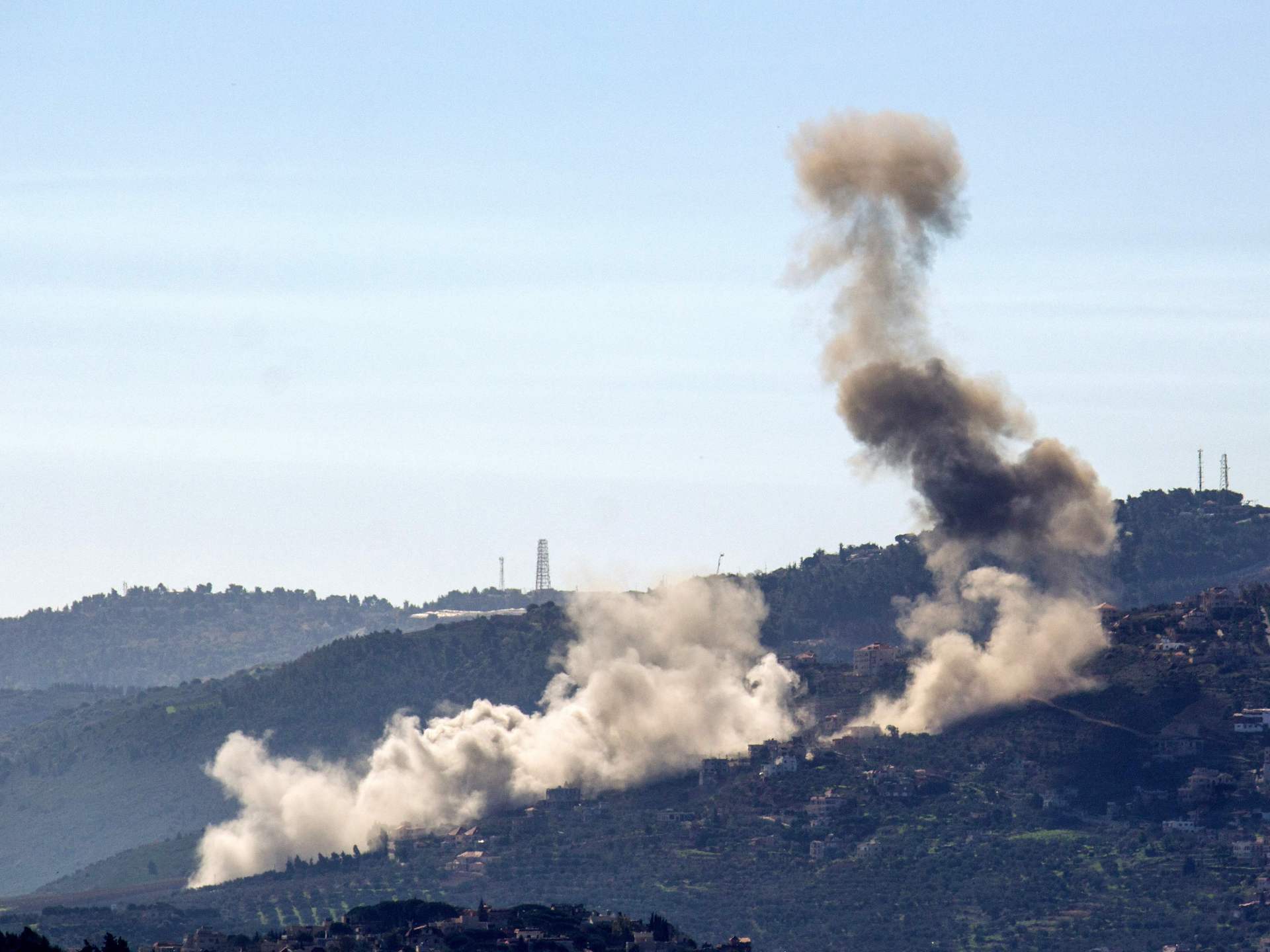Escalation of clashes between Hezbollah and the Israeli army in southern Lebanon (French)
The Lebanese Hezbollah announced the killing of two of its members and bombed several Israeli military sites. The Israeli army responded by bombing towns and villages in the south, while the majority of residents of northern Israel expressed their fear of returning to their homes.
A party statement mourned Ali Saeed Yahya from the town of Taybeh in southern Lebanon, and had previously mourned Sameh Asaad Asaad, from the town of Kafr Kila in the south, who were killed in confrontations with the Israeli army in southern Lebanon, raising the number of party members killed since October 8. /Last October to 146.
Funeral for a Hezbollah member who was killed in the Israeli bombing (Al Jazeera)
Mutual bombing
In the context of the confrontations between Hezbollah and the Israeli army, the party said that its members targeted an Israeli army force in the Israeli Abu Dajj Heights with appropriate weapons.
Hezbollah had announced, in two previous separate statements, that its members had targeted an Israeli force in the vicinity of the Zarit barracks with missile weapons, at midnight yesterday, Sunday.
He also announced that his members targeted a gathering of Israeli soldiers in the vicinity of the monk site, opposite the town of Aita al-Shaab in southern Lebanon, with appropriate weapons and achieved a direct hit.
The party stated that it repelled an attack by Israeli forces off the southern border, at a time when they intended to strike targets inside Lebanese territory.
On the other hand, the Israeli army targeted residential buildings in several towns and villages in southern Lebanon with air strikes and artillery shelling using phosphorus shells.
The official Lebanese news agency reported that Israeli artillery targeted the town of Kafr Kila with phosphorus shells, amid a sweeping operation with machine guns from Metulla towards the town.
She pointed out that the Israeli raid on the town of Taybeh caused major damage to the town’s high school, and the high school director and members of the educational staff survived the bombing.
It indicated that an Israeli drone fired a missile at a residential room inside an agricultural project in the Abel al-Qamh locality, outside the town of Wazzani, without recording any casualties.
An Israeli drone also fired a missile behind the "Khiam Detention Center" in the town of Khiam, south of Lebanon, and artillery bombed Al-Awaida Hill from the Taibe side.
The agency said that this afternoon, Israeli warplanes carried out an air attack, targeting with an air strike the home of the citizen “S. Yaghi” in the town of Tayr Harfa, firing two air-to-surface missiles at him, causing significant damage.
It is noteworthy that the Israeli bombing caused the displacement of more than 83,000 Lebanese from their homes, according to data from the International Organization for Migration.
The border areas in southern Lebanon have witnessed increasing security tension and an exchange of fire between Hezbollah and the Israeli army since the Israeli aggression on the Gaza Strip, where 200 people were killed on the Lebanese side, including 146 from Hezbollah and 25 civilians, including 3 journalists and two paramedics, in addition to a Lebanese soldier and 20 fighters. From the Islamic Resistance Movement (Hamas) and the Islamic Jihad Movement.
On the Israeli side, it was announced that only 9 soldiers and 6 civilians were killed, knowing that Israel imposes military censorship on this information and no independent party can verify the accuracy of these numbers.
Fear in the north
In a related context, an Israeli academic study showed that about 60% of the settlers who were evacuated from the northern regions feared returning to their homes.
While about 40% of those who remained in their homes confirmed that they experienced “post-traumatic stress” symptoms without receiving organized psychological support from the state, according to what was reported by Israeli Channel 13.
The study also showed that post-traumatic feelings increased three times among the residents of the Eastern Galilee, compared to the period before the Al-Aqsa Flood Battle.
The publication of the study coincided with the announcement that the Israeli army was preparing a plan for the possible shelter of about 100,000 people on the northern border.
The Israeli Walla website reported that the aforementioned shelter plan comes in preparation for their evacuation in light of the possible escalation.
In turn, the mayor of Haifa said that the city's residents should stock up on food in the event of a war with Lebanon.
Israeli threat
The deteriorating situation among Israelis in the north prompted Israeli Defense Minister Yoav Galant to stress that even if Hezbollah stops its operations, Israel will not stop until the security situation on the northern border changes.
Galant added, during his meeting with French Defense Minister Sebastien Lecornu, that war with Hezbollah would be harsh on Israel and devastating for Hezbollah and Lebanon, as he put it.
Source: Al Jazeera + agencies

